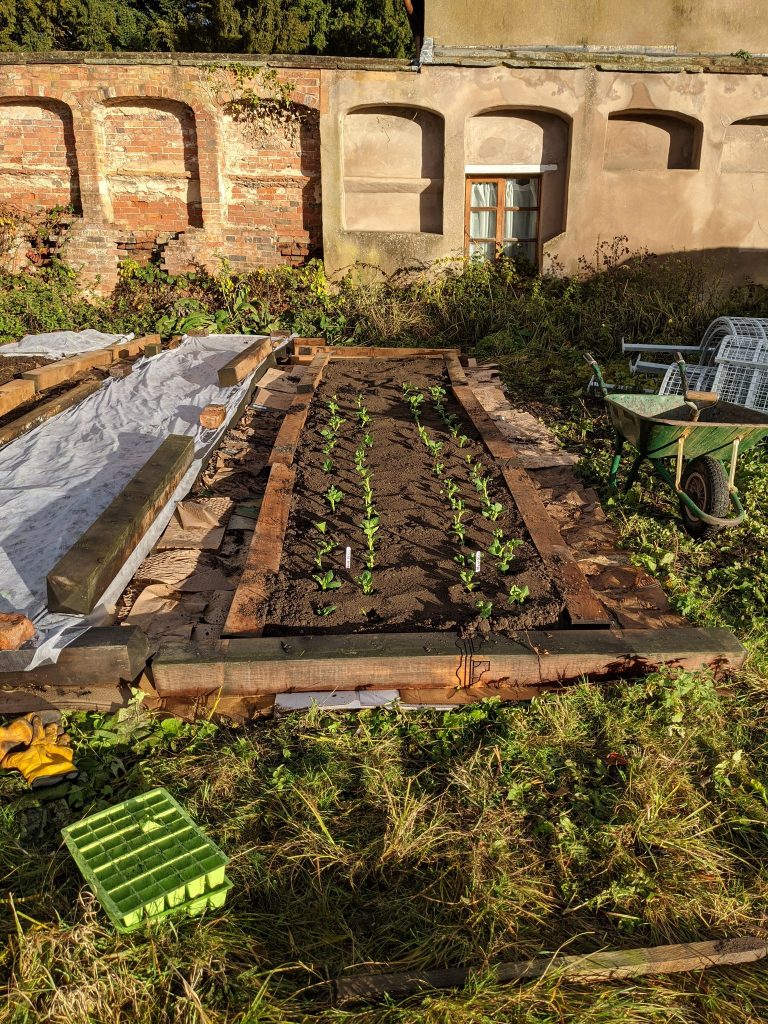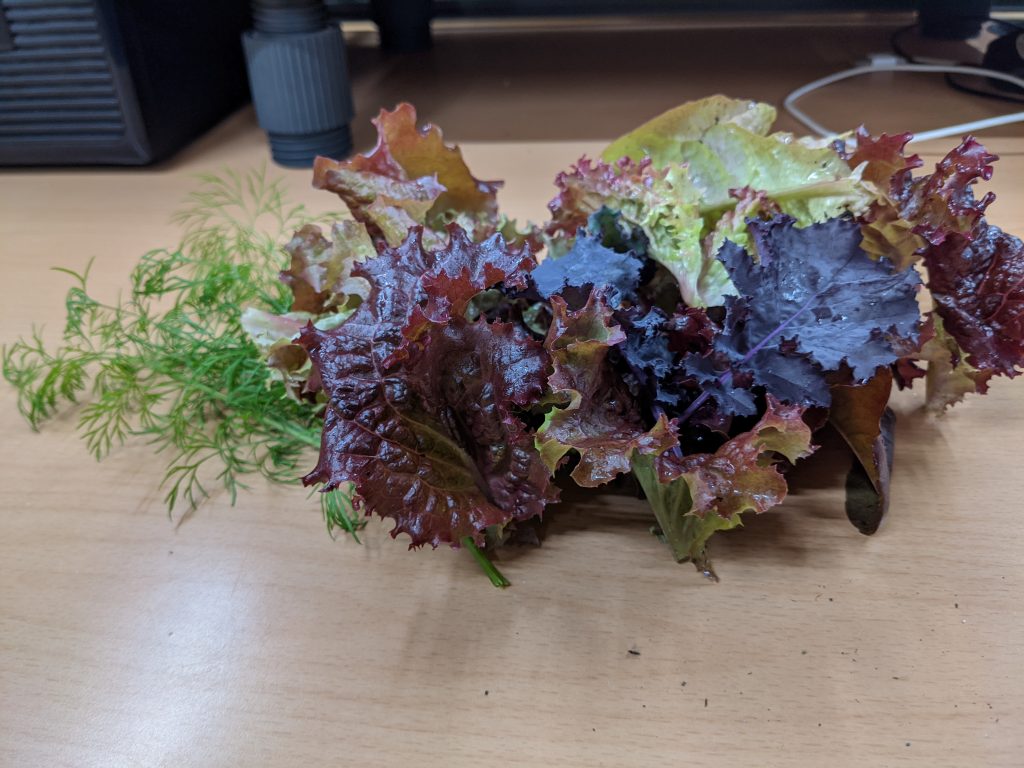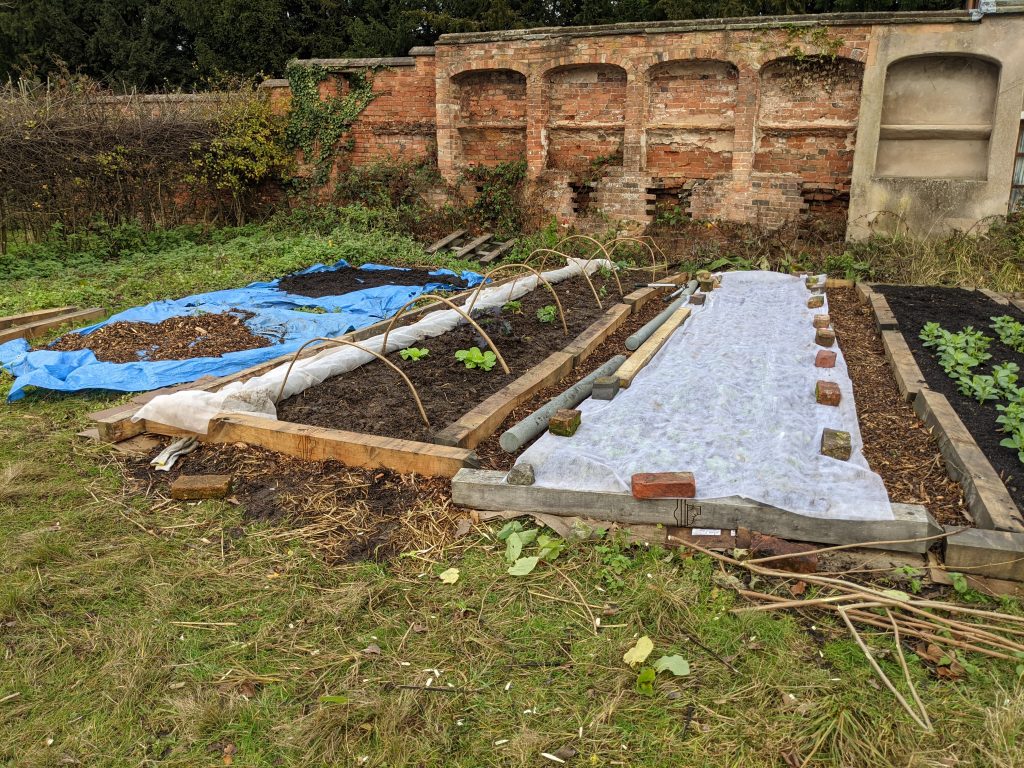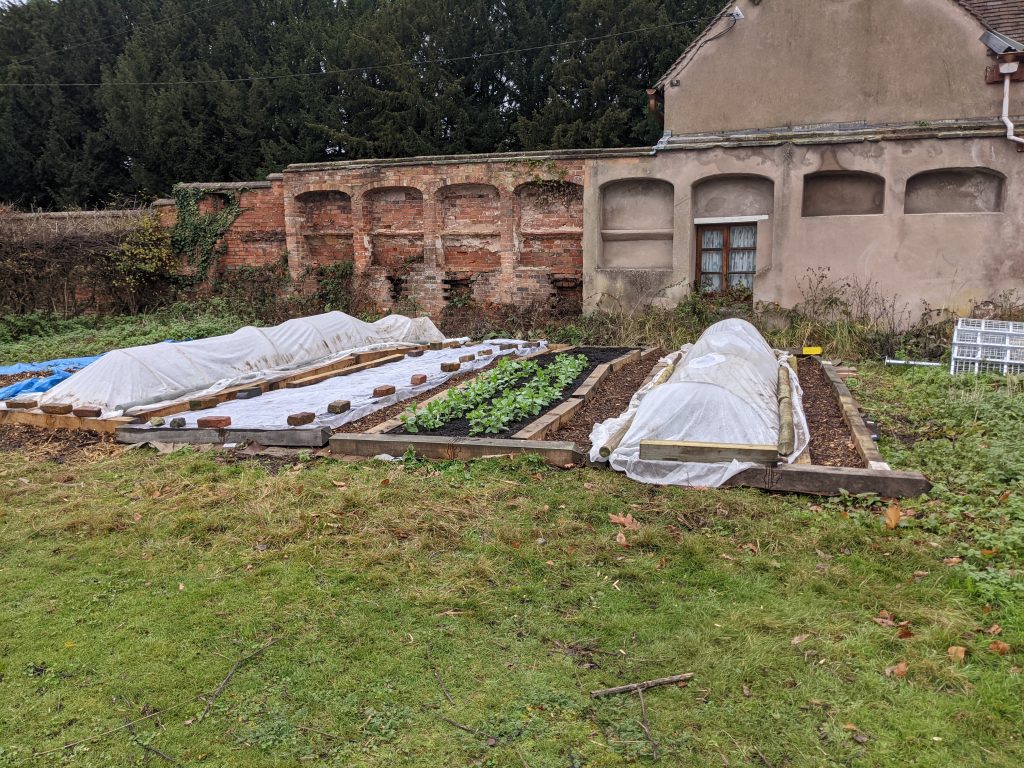When Hams Hall Estate was owned by the Adderley family, its walled garden was used as a kitchen allotment, growing vegetables and flowers for the manor residents. The manor was auctioned off in 1905, and today the walled garden hosts Hams Hall Environmental Centre, the base for Tame Valley Wetlands.
Andrew, our Water and Habitats Specialist Officer, has been working in the walled garden to restore the original vegetable patches back to their productive state, as they would have been during the Adderley residence. He has been using a no-dig method to enrich the soils and create a plot with a natural absence of weeds. So far, produce including dill, purple kale and lettuce have grown with great success.
No-dig methods are efficient and effective ways of growing produce in a garden. As their name suggests, the soil is not dug, minimising disruption to the essential microorganisms, fungi and invertebrates living under the surface. This means the soil retains a higher level of moisture, and the beds are less prone to weed growth. There is also research showing how no-dig methods improve carbon storage in soil, by preventing release of excessive carbon. Charles Dowding, an expert on no-dig gardening, has some helpful tips and detailed explanations on how to create your own no-dig bed on his website.
Andrew is hoping to develop this patch into a community garden in the future – keep in touch with us on social media to find out more about these plans!




